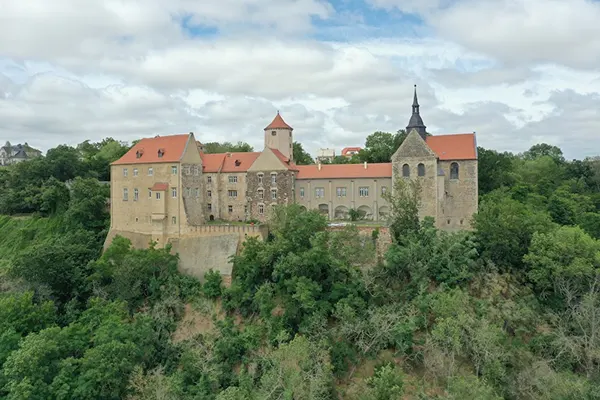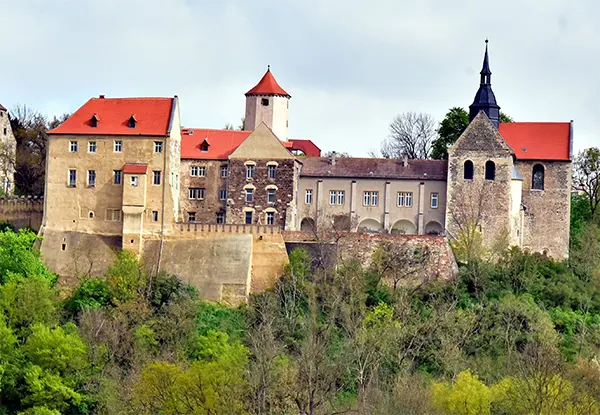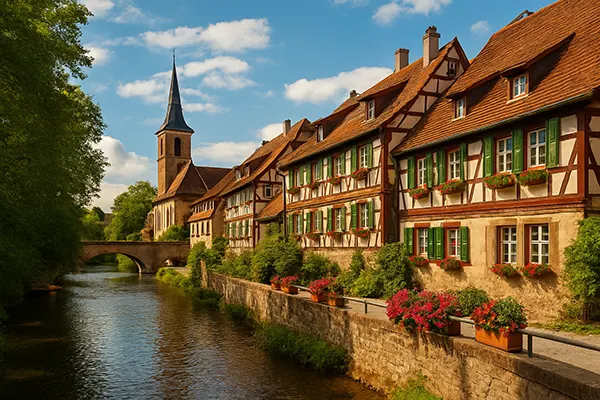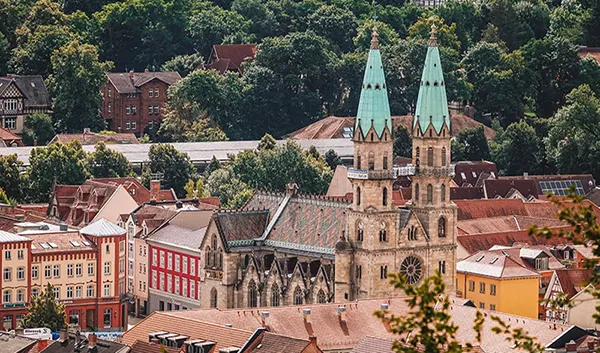
Goseck Circle: Europe’s Earliest Neolithic Observatory
The Goseck Circle in central Germany represents one of the oldest known solar-aligned structures in Europe, dating back to around 4900 BCE. Archaeologists consider it a significant monument of the early Neolithic period, reflecting an advanced understanding of seasonal solar movements and agricultural timekeeping. Its preserved features allow researchers to explore how prehistoric communities observed the Sun and organised their yearly cycles.
Archaeological Background and Discovery
The Goseck Circle was identified in 1991 during aerial surveys that revealed a striking circular pattern beneath modern farmland. Excavations began in the early 2000s and confirmed that the structure belonged to the Linear Pottery culture, known for early farming settlements across Central Europe. Radiocarbon dating placed the construction of the site at nearly seven thousand years old, making it one of the most important prehistoric landmarks in the region.
The monument consists of a circular ditch, two palisade rings, and three precisely positioned gates. These elements were constructed using timber and earth, creating a large ritual and observational space of roughly seventy-five metres in diameter. The gates in the southeast and southwest align with the sunrise and sunset during the winter solstice, showing deliberate engineering techniques used to track seasonal changes.
Research teams documented numerous artefacts such as pottery fragments, stone tools, and animal bones, which confirm ceremonial use of the site. The distribution of these finds suggests repeated gatherings, possibly connected with the start of winter, agricultural planning, or funerary practices. Modern reconstructions follow the original layout, allowing visitors to observe the spatial logic of the early Neolithic builders.
Scientific Interpretation of the Site
Archaeologists studying the Goseck Circle believe that its main role was connected with solar observation, particularly the winter solstice. The placement of the gates reflects a precise awareness of the Sun’s movement along the horizon, enabling early agricultural societies to maintain seasonal calendars. This alignment would have helped communities anticipate the gradual return of daylight and prepare for the coming agricultural cycle.
Several hypotheses describe the broader cultural meaning of the circle. Some scholars propose that the monument functioned as a sacred site, where communities marked the transition between seasons through gatherings and rituals. Others focus on its potential role as a central meeting place for early farming settlements, where decisions regarding land use and food storage were coordinated among households.
Studies comparing Goseck with later European megalithic structures, such as Stonehenge, show continuity in prehistoric interest in solar cycles. Although Goseck predates Stonehenge by two millennia, both reflect advanced planning and long-term observations of the sky. The circle demonstrates that solar-oriented design emerged much earlier in European prehistory than previously assumed.
Architectural Features and Construction Methods
The layout of the Goseck Circle includes an outer ditch, an inner ditch, and two wooden palisades that once stood several metres high. These features were arranged with geometrical precision, suggesting careful planning rather than spontaneous construction. The builders selected a prominent location on a natural plateau, providing visibility of the horizon in all directions.
The wooden palisades were constructed using oak trunks sharpened at one end and placed vertically into narrow trenches. The gates were left open at specific points, creating corridors that framed the position of the Sun at selected times of the year. Experimental archaeology demonstrates that preparing the timber, transporting it, and assembling the palisades required coordinated labour from several families or an entire village.
The ditch surrounding the inner structure appears to have served symbolic rather than defensive purposes. Its uniform depth indicates that the construction process followed a standardised plan shared by many settlements of the Linear Pottery culture. Observations of soil layers reveal maintenance activities carried out over multiple generations, confirming that the monument remained a central location for communal gatherings across time.
Alignment with Solar Events
The alignment of the southeastern and southwestern gates with winter solstice sunrise and sunset remains one of the site’s most important features. This precision allowed early farmers to establish a stable reference point for their seasonal activities, ensuring accurate timing for food storage, livestock care, and preparation for the next growing season. The solstice likely marked a key turning point, symbolising the reappearance of longer daylight hours.
Researchers have used modern astronomical software to confirm that the alignments still correspond to the Sun’s position in the late fifth millennium BCE. These simulations demonstrate intentional engineering rather than coincidence. The builders selected gate angles with remarkable accuracy, taking into account the geographic latitude of central Germany and the gradual shift of the horizon throughout the year.
In addition to solar tracking, scholars note that the northern gate may have served as a reference for measuring the Sun’s highest and lowest paths across the sky. Although no direct evidence suggests the observation of other celestial bodies, the overall design shows a deliberate attempt to create a reliable calendrical marker for a farming-based society.

Modern Research and Cultural Significance
The reconstructed Goseck Circle opened to the public in 2005 and has since become an important educational site for archaeology and prehistoric astronomy. Interpretive paths and informational panels provide visitors with detailed explanations of how researchers reconstructed the original palisades and ditch system. The work was carried out using a combination of excavation data, experimental building methods, and comparisons with similar Neolithic structures.
Today, the circle serves as a valuable resource for understanding the social and technological development of early farming communities. Ongoing studies focus on environmental samples collected from the surrounding soil, allowing researchers to identify crops, wild plants, and climatic conditions that influenced Neolithic life. Analyses of these materials provide insight into population movements, agricultural strategies, and long-term settlement patterns.
The Goseck Circle is now recognised as part of a broader network of solar-aligned monuments stretching across central Europe. Its preservation contributes to cultural heritage efforts that aim to document early technological innovation and collective knowledge. As a result, the site plays a meaningful role in public education, highlighting the sophistication and adaptability of prehistoric societies.
Contemporary Interpretation and Visitor Experience
The reconstructed palisades give visitors a realistic sense of the scale and structure of the original monument. Standing inside the circle reveals how the gates frame the horizon at specific points, just as they would have done across millennia. This spatial experience allows modern audiences to appreciate the observational accuracy achieved by early farmers without the use of modern instruments.
Local museums and research centres provide additional context, offering exhibitions on Neolithic life, early agriculture, and the history of archaeoastronomy. These institutions collaborate with universities to conduct field schools, where students participate in hands-on excavation and documentation. Their work continues to refine the understanding of ritual behaviour and astronomical knowledge among early European communities.
While the original wooden structure no longer survives, the careful reconstruction ensures that visitors can visualise its form and function. The combination of archaeological evidence and modern interpretation enables a clearer understanding of why the Goseck Circle held such importance for prehistoric societies and how it contributed to their seasonal planning and cultural identity.


